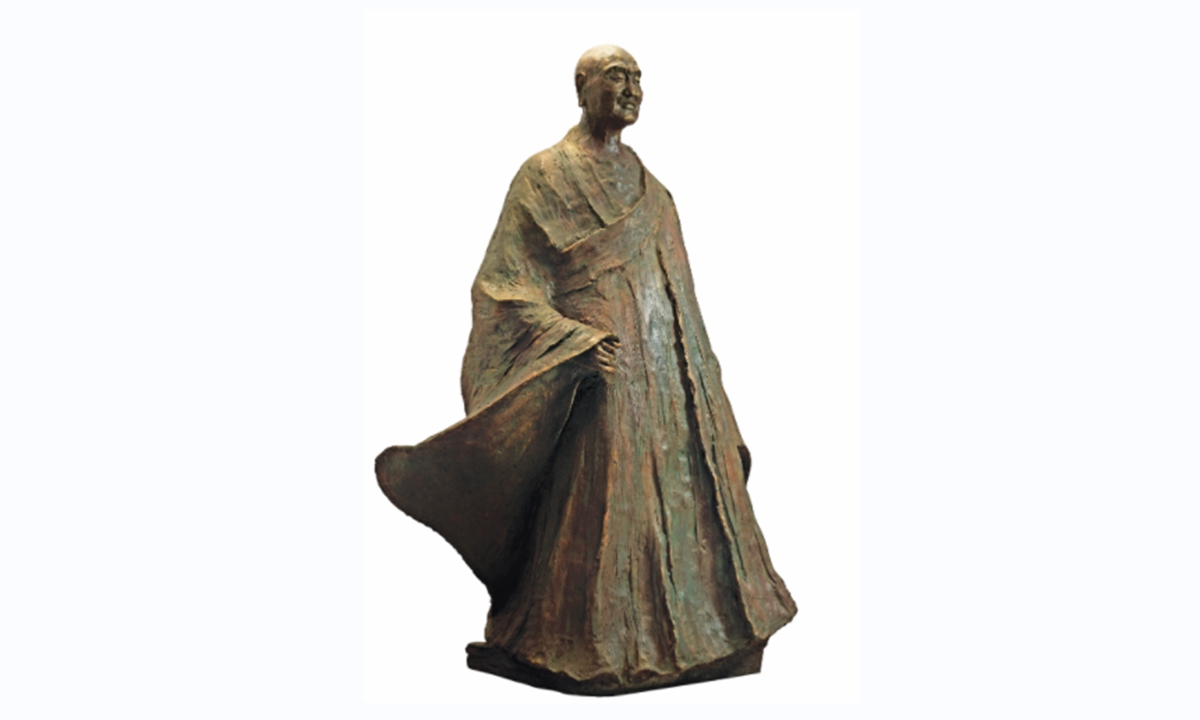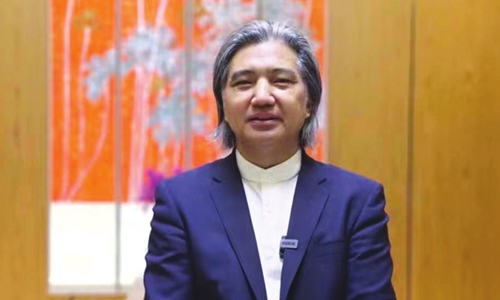
The bronze statue of Chinese monk Jianzhen, situated in Ueno Park in Tokyo, Japan Photo: Courtesy of Gao Bo
On Wednesday a bronze statue of the Tang Dynasty (618-907) monk Jianzhen, who brought Buddhism to Japan, was unveiled in central Tokyo as a symbol of peaceful and friendly relations between China and Japan, to commemorate the 50th anniversary of the normalization of diplomatic relations in 2022.
The statue, created by world famous sculptor Wu Weishan, now stands in Ueno Park, the first park in Japan to show world-renowned masterpieces of Monet, Picasso and Rodin.
The park, famous for its museums and galleries displaying Japan's national cultural relics and worldwide classics, has now welcomed its first sculpture created by a Chinese artist.
Jianzhen is a representative figure in the long history of exchanges between China and Japan, noted Wu, who is also director of the National Art Museum of China, in a video address at the unveiling ceremony.

Wu Weishan, director of the National Art Museum of China Photo: Courtesy of Gao Bo
"His sculpture standing in Ueno Park is an eye-catching reminder of the important cultural exchanges that took place between China and Japan since the Han [206BC-AD220] and Tang dynasties."
Completely hand forged in bronze by the creator, the 2.48-meter-tall statue took six months to complete.
The statue depicts the elderly monk standing upright and full of faith as he finally arrives by boat to Japan after five previous failed attempts.
The touching scene is a tribute to the monk's dedication to spreading the Buddhist faith in the far-off nation, which he finally reached in his 60s despite having lost his sight due to an infection acquired during his fifth failed attempt to reach Japan.
"Jianzhen is a pioneer in the history of cultural exchanges between China and Japan, as well as a symbol of friendly exchanges. On the occasion of the 50th anniversary of the normalization of diplomatic relations between the two countries, the arrival of the statue is of great significance," Chinese Ambassador to Japan Kong Xuanyou said at the ceremony.
Wu is a sculptor who brings idyllic Chinese freehand aesthetics to his art. Over the past 40 years, Wu has created more than 600 sculptures that have promoted cultural exchanges between China and the rest of the world.
He has not only created statues of Chinese philosophers Confucius and Laozi, but also statues of Western historic figures as well.
In 2018 his sculpture of German philosopher Karl Marx was put on display in Trier, Germany, the political theorist and sociologist's hometown.
For decades, Wu has dedicated himself to using art to strengthen China-Japan cultural ties. His statue of the Ming Dynasty (1368-1644) monk Yinyuan has been on display in Nagasaki since 2021.
The artist told media that his works in Japan aim to encourage the two countries to work together to play a positive role in promoting peace, civilization and progress and building a community with a shared future for mankind.
Global Times





